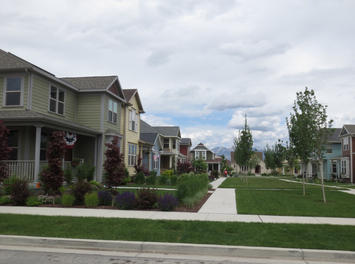
I’ve been asked to submit a proposal for the next Congress for New Urbanism in May of 2018 by one of the organizers in Savannah, Georgia. I declined the first two times I was asked, then reluctantly agreed to offer a tentative outline the third time I was approached. I’m not convinced the committee will have much use for what I have to say.









CNU has done some amazing things over the years that are worth celebrating. They’ve taken the standard building blocks of suburbia and infused them with some of the elements of earlier forms of traditional architecture and urbanism. Simple things like front porches, interconnected street grids, and garages at the rear along back alleys were subtle, but important refinements to the typical cul-de-sac arrangement. Bringing pocket parks, bike lanes, schools, and churches right in to residential neighborhoods was a huge struggle that challenged prevailing regulatory orthodoxy, but were instantly embraced by homebuyers hungry for this kind of community. And integrating storm water management, wildlife preservation, bike lanes, and urban agriculture into the master plan turned tedious problems into beloved amenities. None of this was easy.









Urban infill has also been reinvented by CNU in a way that satisfies market demand as well as the endless regulations concerning off street parking requirements, fire codes, the Americans with Disabilities Act, and the parameters set down by institutional investors who fund these projects. These buildings are popular with a certain demographic, boost the local tax base, are profitable for those who build them, and contribute to the revitalization of older neighborhoods.





My criticism of these New Urbanist activities is that they are fantastically large, complex, and hideously expensive relative to the resources and skills of a simple mom and pop who might want to build something small and incremental in their hometown. CNU has worked with an army of professionals to create noticeably better places. Kudos. But it’s impossible for ordinary people to participate in the process. If anything, it’s substantially more difficult to build or even modify anything at the household level now than it was twenty six years ago when CNU first formed. To be fair, changing the larger society hasn’t been an option. Instead CNU learned to do the things that worked and to scale up to meet the regulatory and political environment as needed.





So what is it that I might say to the assembled professionals in Savannah next spring – assuming anyone wants to listen? First, CNU is now captive to the same institutional get-big-or-get-out Ponzi dynamics as every other part of society. The twentieth century was about growth of all kinds and our banks, production builders, corporations, and government agencies ramped up to manage that growth. The twenty first century is all about hitting limits, paying old bills that are coming due, maintaining an endless amount of aging infrastructure, and accommodating contraction. Absolutely no one in any position of authority has any idea of how to scale back down.





Second, the overwhelming majority of communities outside the economic bubbles of places like Seattle, D.C. Miami, Dallas, New York, and San Francisco are visibly in decline with half dead strip malls and abandoned gas stations constituting the tax base and employment center. These places will never be reinvented as tree lined boulevards with streetcars and pedestrian oriented infill development. The money isn’t there. The market demand isn’t there. The political will isn’t there. And the remaining middle class residents of these places will come out with pitchforks and firebrands in opposition to public transit and higher density. These places never had a traditional Main Street to dust off and infuse with new life. They will have no choice but to adapt in place more or less as they are physically.



Half the country is going to have to find a way to make things work on a shoestring budget in the absence of any new construction, professional planners, bank financing, and official permission. I see evidence of successful sub rosa household adaptation everywhere I go. Unfortunately I can’t write about most of it because it’s illegal. Quietly converting a single family home into a de facto duplex, planting a productive veggie garden on the front lawn, or operating a business out of the garage is treated with the same military style police response as drug trafficking and the sex trade. People are figuring this stuff out on the fly and on the cheap all by themselves and it works – not in spite of the lack of master planning, corporate investment, and government intervention – but because of it. CNU is irrelevant to this process.
This piece first appeared on Granola Shotgun.
John Sanphillippo lives in San Francisco and blogs about urbanism, adaptation, and resilience at granolashotgun.com. He's a member of the Congress for New Urbanism, films videos for faircompanies.com, and is a regular contributor to Strongtowns.org. He earns his living by buying, renovating, and renting undervalued properties in places that have good long term prospects. He is a graduate of Rutgers University.












